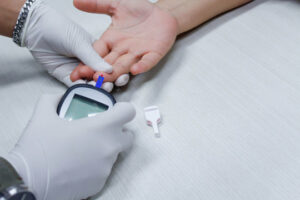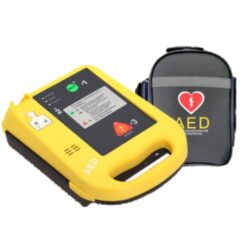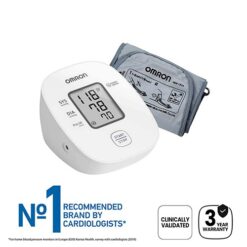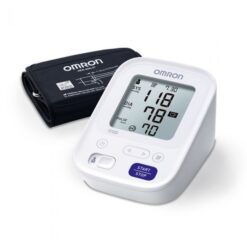Oscillatory devices produce a digital readout and work on the principle that blood flowing through an artery between systolic and diastolic pressures causes vibrations in the arterial wall which can be detected and transduced into electrical signals.
With an oscillatory device, a cuff is inflated over the upper arm or wrist. The device decide how much the cuff should be inflated to reach a pressure about 20 mm Hg above systolic pressure for any individual. When the cuff is fully inflated to this pressure, no blood flow occurs through the artery. As the cuff is deflated below the systolic pressure, the reducing pressure exerted on the artery allows blood to flow through it and sets up a detectable vibration in the arterial wall. When the cuff pressure falls below the patient’s diastolic pressure, blood flows smoothly through the artery in the usual pulses, without any vibration being set up in the wall. Vibrations occur at any point where the cuff pressure is sufficiently high that the blood has to push the arterial wall open in order to flow through the artery.
The vibrations are transferred from the arterial wall, through the air inside the cuff, into a transducer in the monitor that converts the measurements into electrical signals.
These digital devices deflate at about 4 mm Hg per second, making them sometimes seem slower to use than auscultatory aneroid devices, but they are more accurate
Arrhythmias introduce additional vibrations within the arterial wall, presenting problems for detecting blood pressure regardless of the technique employed. Elderly people have less elastic arteries, but even the weakest vibrations are detectable using oscillometric devices and the correct sized cuff. Bladders within upper arm cuffs must encircle 80% of the arm’s circumference.

 Adult Diapers
Adult Diapers
 Air Management
Air Management
 Alcohol Tests
Alcohol Tests
 Bandages
Bandages
 Cholesterol Tests
Cholesterol Tests
 Consumables
Consumables
 Cotton Products
Cotton Products
 Drug Tests
Drug Tests
 First Aid Kits
First Aid Kits
 Glucose Tests
Glucose Tests
 Hemoglobin Tests
Hemoglobin Tests
 HIV Tests
HIV Tests
 Intravenous
Intravenous
 Lancets
Lancets
 Linen Savers
Linen Savers
 Measuring & Monitoring Machines
Measuring & Monitoring Machines
 Mobility
Mobility
 Orthopeadics
Orthopeadics
 Packaging & Storage
Packaging & Storage
 Pregnancy
Pregnancy
 Safety Wear
Safety Wear
 Supplements
Supplements
 Tapes
Tapes
 Dental Care
Dental Care
 Ultrasound
Ultrasound
 Urinalysis
Urinalysis
 Wound Dressing
Wound Dressing










